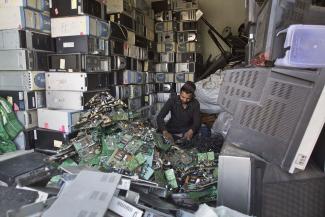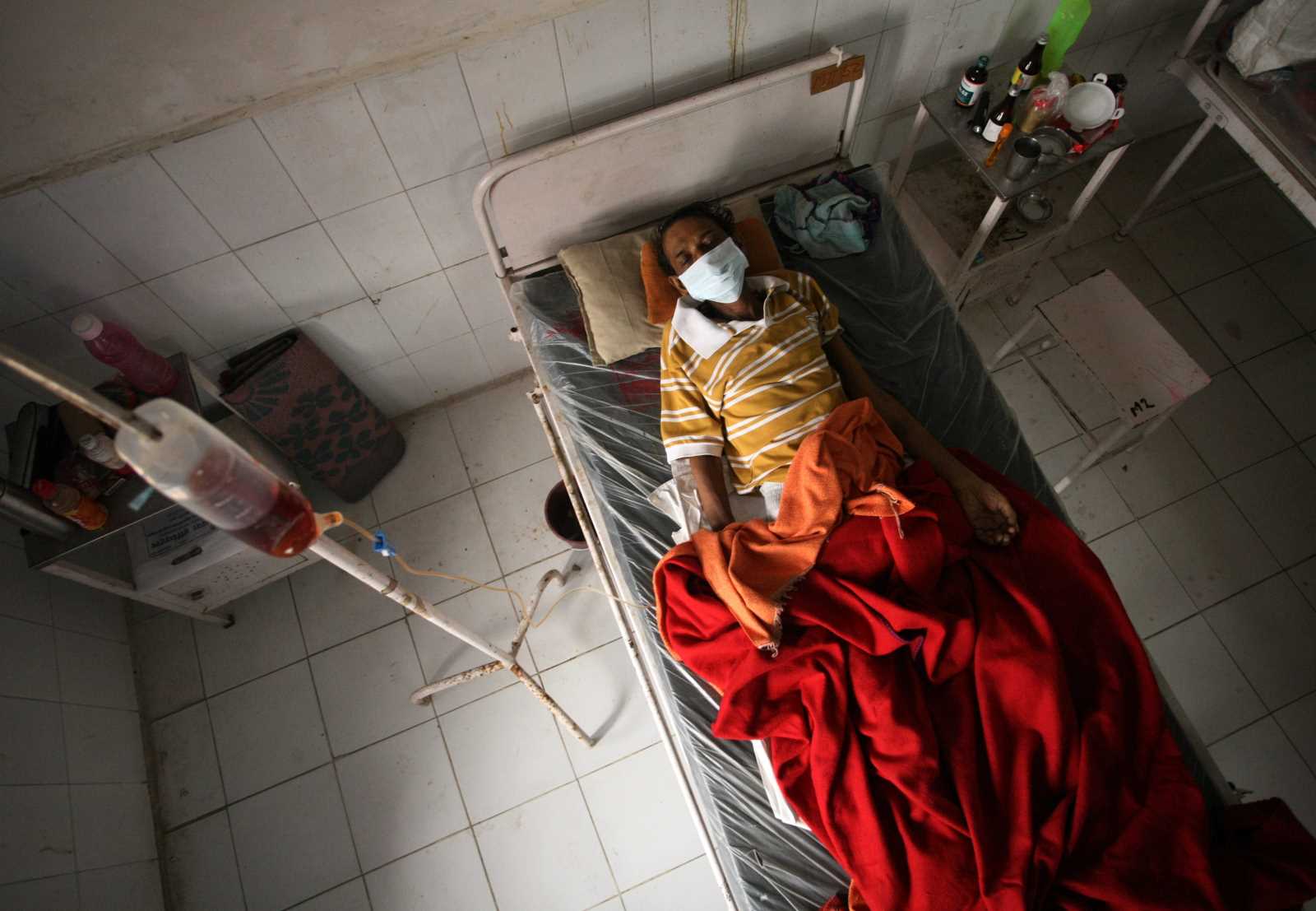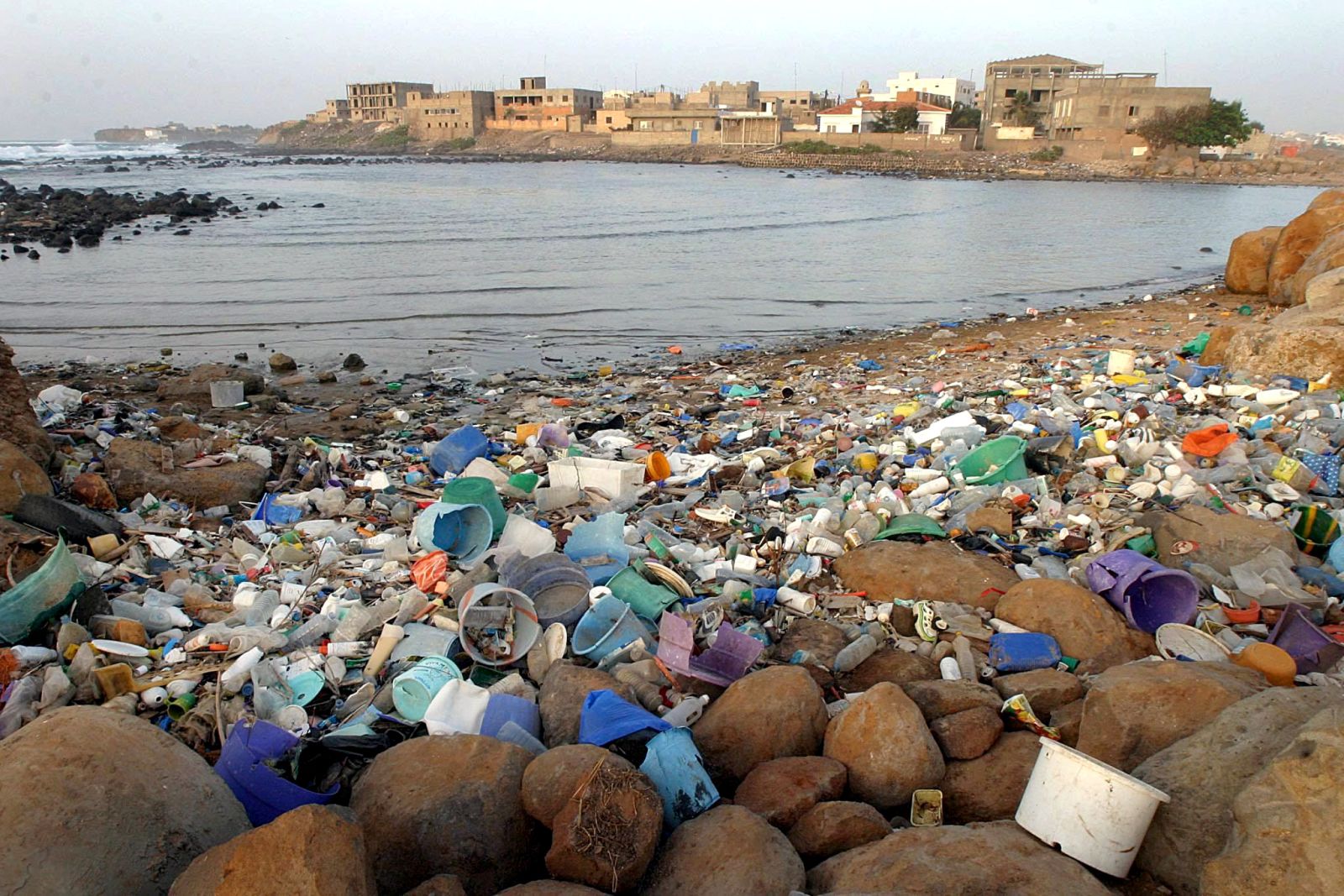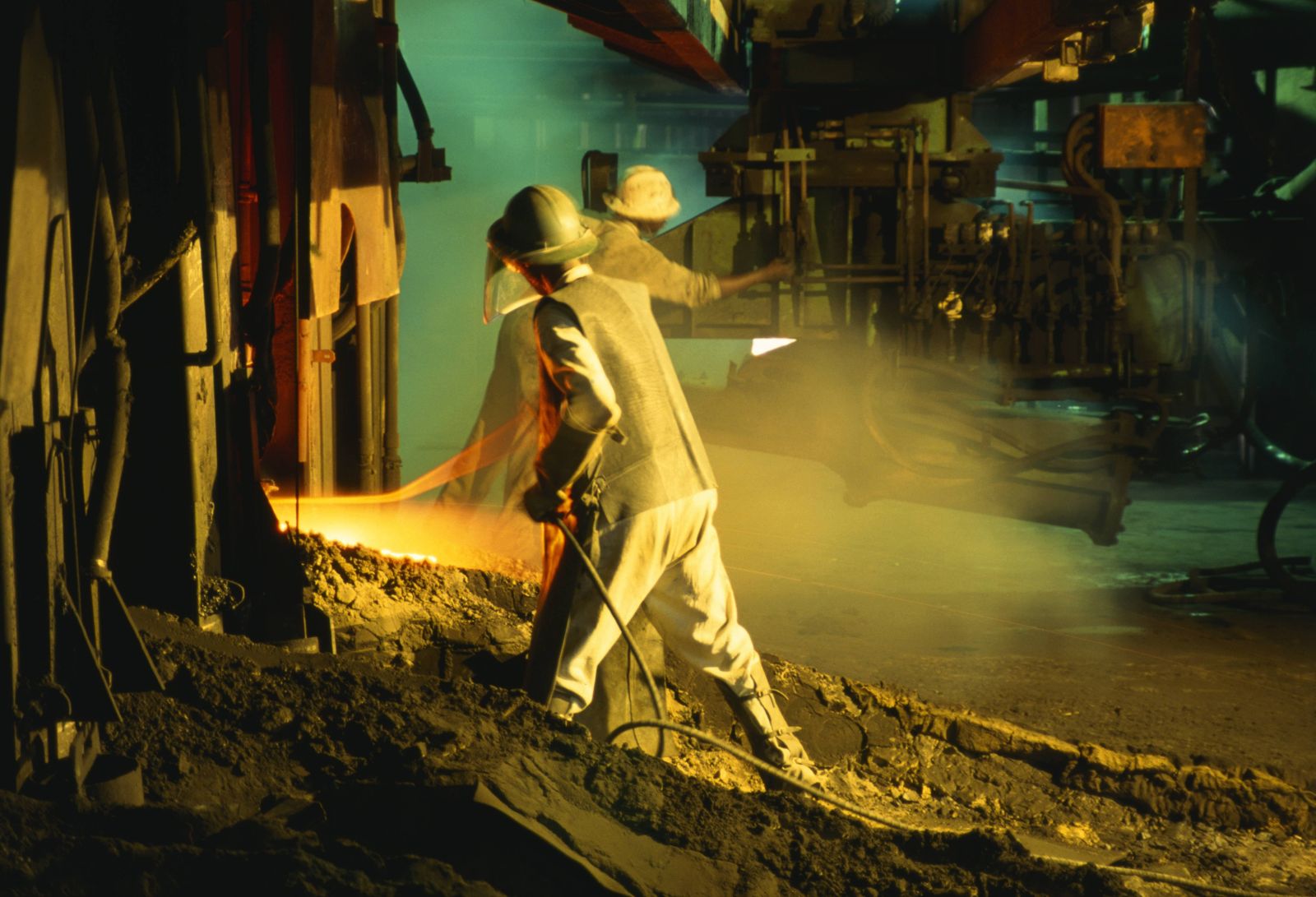Environmental hazards
Stop global trend of chemical intensification

Chemicals permeate our lives. Most daily-use products contain them – ranging from cosmetics to clothing to computers (see Olga Speranskaya in Focus section of D+C/E+Z e-Paper 2021/03). Consider an up-to-date smartphone. It will include some 60 different raw materials. Plastics will account for about half of its weight. These plastics are made of basic bulk chemicals plus special ingredients that ensure desired characteristics such as colour, rigidity, resistance to sunlight or low flammability, for example. Another quarter of the weight is contributed by about 30 different metals including rare earths. The smartphone also includes glass, ceramics and other raw materials.
A growing share of humankind, moreover, consumes food that is produced by industrial-scale, chemicals-dependent agriculture. People live and work in buildings that contain a multitude of chemical substances. They commute by bus, train or car, all of which require lots of energy, the generation of which again requires many different chemicals and chemical reactions. Quite obviously, we need renewable energy supply to achieve sustainability, but it too will require chemicals. That is equally true of sustainable architecture or sustainable mobility.
Cross-cutting issue
Since chemicals are omnipresent in our daily lives, they are relevant for achieving the Sustainable Development Goals (SDGs). That applies to every single SDG. Several tens of thousands of chemicals are being marketed internationally, and more are being invented fast. Each and every one serves some kind of purpose, but the problem is that two thirds of the chemicals are hazardous in one or more ways. Many even have to be hazardous to fulfil their function. The multitude of substances combined with the multitude of substance applications results in huge regulatory challenges. We need rules to prevent harm to human beings and, more generally, the natural environment.
This issue has been on the international agenda since 1992, when the UN Conference on Environment and Development (UNCED) in Rio de Janeiro adopted the Agenda 21. It included what was later called the 2020 target for sound management of chemicals. The guiding ideas have since been confirmed several times and figure in the SDG target 12.4: “By 2020, achieve the environmentally sound management of chemicals and all wastes throughout their life cycle, in accordance with agreed international frameworks, and significantly reduce their release to air, water and soil in order to minimise their adverse impacts on human health and the environment.”
How to bring about chemical safety
Experts from science, business and government agencies are working on minimising chemical risks during products’ life cycles. The underlying principle is actually quite simple. First of all, it is important to know all – and especially the problematic – properties of a chemical. Extensive testing serves to understand, for example:
- whether it has toxic impact on people or animals,
- whether it causes cancer,
- whether it is explosive,
- to what extent it is decomposed by microorganisms, radiation or other forces in the natural environment, and / or in treatment plants.
It is also important to understand what concentrations and doses lead to what impacts, and what kind of usage leads to what kind of pollution that may harm humans or nature. Put in simple terms, chemical safety is basically about ensuring that neither people nor the natural environment are exposed to hazardous contamination. Of course, accidents – including explosions – at production facilities must be prevented too.
At the global level, the UN Environment Programme (UNEP) and the World Health Organization (WHO) are among the leading agencies involved in the Inter-Organization Programme for the Sound Management of Chemicals (IOMC). The IOMC’s mission is “sound management of chemicals and waste” (SMCW). Other international agencies are involved as well. Most, though not all sovereign nations contribute by implementing several internationally binding conventions, for instance those that bear the names of the cities where they were concluded – Basel, Rotterdam, Stockholm (BRS) und Minamata.
The voluntary Strategic Approach to International Chemicals Management (SAICM) was launched at a summit in Dubai in 2006. It unfortunately lacks teeth and is underfunded. On the upside, its multi-stakeholder and multi-sector approaches make sense. Both are needed to facilitate effective, cross-cutting cooperation (for future of SAICM and SMCW see box).
Environment and health agencies are similarly in charge of chemical-safety issues at the level of regional organisations and nation states. The EU regulations concerning the classification, labelling and packaging (CLP) of substances and mixtures are an example, and so are EU rules on registration, evaluation, authorisation and restriction of chemicals (REACH regulation) (see Katja Dombrowski in Focus section of D+C/E+Z e-Paper 2021/03). Other government departments regrettably do not so far consider sound chemicals management something they must pay attention. That must change.
Global megatrends
Chemical safety must not be understood only in a narrow sense. Several disturbing global trends add to the challenges. One major problem is that, for most practical purposes, the huge variety and volumes of several tens of thousands of chemicals make it hard, if not impossible, to manage them appropriately in each and every setting.
From 2000 to 2017, the chemical industry’s global production capacity (excluding pharmaceuticals) almost doubled from 1.2 billion to 2.3 billion tons. It is expected to double again by 2030. Sales figures basically tell the same story. Global turnover is expected to increase from € 3.5 billion in 2017 to € 6.6 billion in 2030. At the same time, the chemical industry is setting up facilities in new places and expanding its marketing to new countries. With those shifts, it is responding to different rates of population growth, globalisation, digitalisation and the impacts of the climate crisis.
The sad truth is that humankind is wide off the mark in regard to the 2020 target. That is what the UNEP concluded 2019 in the second edition of its Global Chemicals Outlook (GCO II). Indeed, vast amounts of hazardous chemicals keep polluting our environment. Pollution occurs during the production of chemicals but also during products’ life cycle and through waste.
Manufacturing 1 kg of pharmaceuticals causes anything between 25 and 100 kg of waste and emissions. Adding to the worries, the chemical industry is energy-intensive and responsible for huge volumes of greenhouse-gas emissions. Some extremely toxic chemicals have been banned internationally for a long time, PCB (polychlorinated biphenyls) for example. Nonetheless, these chemicals can be found in the most remote places, including in polar ice, Himalayan glaciers or even 10 km below the ocean surface in the Mariana trench. The concentrations found in the organisms of deep-sea crustaceans and polar bears are sometimes higher than those in animals living in industrialised regions.
In the 1950s, oil-based plastics began to conquer the world. Back then, the annual production volume was about 2 million tons. The comparative figure was 400 million tons in 2015, and experts reckon that it will rise further to 1.1 billion tons by 2050. From the 1950s to 2015, a total of 8.3 billion tons were produced, of which almost 5 billion have already been “disposed of”. In many cases, that was done without any kind of systematic waste management. The results include ocean pollution with plastic and micro plastic waste (see Sabine Balk in Focus section of D+C/E+Z e-Paper 2021/03). Many plastics contain dangerous softeners or flame retardants. The concentrations tend to be so low, that these plastics are not poisonous in a narrow sense. However, the substances are long-lasting and have been discarded in huge quantities. Thus, they can indeed cause harm and affect people.
The growth trends outlined above are incompatible with sustainable development and staying within the planetary boundaries. Chemicals management and chemical safety are therefore issues of great relevance. They concern the international community. In view of daunting global challenges, we must tackle important questions:
- What level of per-capita chemicals use serves the welfare of society?
- For what purposes is the use of hazardous chemicals (still) needed?
- How do we recycle better and more effectively, in the full knowledge of our resources being limited?
- How do we generate the massive volume of renewable energies needed for recycling purposes?
International cooperation
The questions of which uses and what volumes are indispensable to society are becoming ever more urgent. We need global cooperation. Otherwise, it will be impossible to recycle precious raw materials of the kind that smartphones contain, minimising losses in the process. Currently, electronic devices and electric goods tend to be recycled by informal-sector workers in the global South. The people doing the work are exposed to health hazards, and the recycling rates are low.
Progress is possible. We have concepts for using chemicals in a sustainable way. Everyone involved in designing, producing, using, recycling and disposing relevant goods must apply those concepts. Yes, it is true that the debate has not been concluded on what exactly constitutes sustainable chemical use and how to measure progress. However, that does not mean we cannot act responsibly yet. The key to success is targeted innovation, with innovation understood not only in a narrow technological sense. We also need social innovation including in regard to international cooperation – transcending borders and spanning world regions.
The core problem is that many countries lack the needed expertise and institutional capacities. This must change fast. The toolkit for ensuring chemical safety must be made use of everywhere. However, the gap between advanced nations on the one hand and developing countries and emerging markets on the other appears to have widened in the past 10 years. In many countries, more – and more intensive – use of chemicals is making capacity shortfalls ever more obvious.
While a growing number of countries in the global South has been passing legislation on chemicals, they still tend to lack the personnel and organisations they would need to enforce those laws. By 2017, more than 120 nations had not implemented the Globally Harmonized System (GHS) for classifying chemicals. According to SAICM’s Global Plan of Action (GPA), moreover, all countries were supposed to implement the GHS by 2010. It is, after all, an important precondition for ensuring chemical safety. In 2018, more than 135 countries still did not have a pollutant register. According to the GPA, they were supposed to establish one by 2015. Quite evidently, capacity development must become a top priority.
Setting a target
In this decade, the international community must set the course towards making the use of chemicals sustainable. Part of this agenda is to ensure that the benefits chemicals offer are shared fairly. Obviously, the costs to prevent harm and clean up legacies must be shared fairly as well. Existing risks must be reduced and ultimately avoided. A global bargain must be negotiated. At the technical level, the notion of essential uses is once again gaining traction. It is currently a hot topic in the context of the European initiative to radically restrict per- and polyfluoroalkyl substances (PFAS). Developments of this kind show that our species must come to grips with the basic question of what level of “chemical intensity” is appropriate.
Quite obviously, the trend towards ever greater chemical intensity cannot continue. Finally, for every application of a chemical, we must determine what intensity is SDG compatible and also serves society’s well-being. We must understand what the maximum level is that human beings and nature can tolerate.
For many chemicals, the maximum levels are already obvious, so appropriate sharing and distribution is the main issue to gain sustainability. Around the world, the use of hazardous substances must be reduced and managed responsibly. Strict safety standards must be observed. The European chemicals strategy for sustainability, that has introduced a toxic-free hierarchy, delineates a tangible approach which sets international standards.
The Paris agreement on climate change includes the aspiration to limit global warming to 1.5°. It would be most helpful if the international community could reach consensus on a similar figure for chemical intensity. To judge by the analysis of the GCO II, chemical intensity is likely to increase by a factor of 2.3 per capita in the four decades from 1990 to 2030. We need to learn fast whether that factor is too big. Perhaps 1.5 would be more fitting in this context, as in climate matters. Setting such a target would help the international community achieve results. So far, we have an Intergovernmental Panel on Climate Change, but not on chemicals. Let us hope establishing one will be among the far-reaching decisions that ICCM5 (see box) will take.
References
The Inter-Organization Programme for the Sound Management of Chemicals (IOMC):
https://www.who.int/iomc/en/
UNEP, 2019: Global Chemicals Outlook II – From legacies to innovative solutions. Implementing the 2030 Agenda for Sustainable Development:
https://www.unenvironment.org/explore-topics/chemicals-waste/what-we-do/policy-and-governance/global-chemicals-outlook
Synergies among the Basel, Rotterdam and Stockholm conventions:
http://www.brsmeas.org/default.aspx
Minamata Convention on Mercury:
http://mercuryconvention.org/
European Commission, 2020: Chemicals strategy for sustainability towards a toxic-free environment:
https://ec.europa.eu/environment/strategy/chemicals-strategy_en
Hans-Christian Stolzenberg is in charge of international chemicals management at the German Environment Agency (Umweltbundesamt – UBA).
hans-christian.stolzenberg@uba.de











